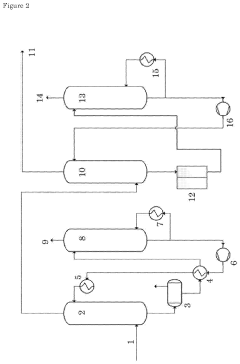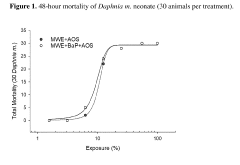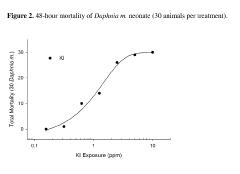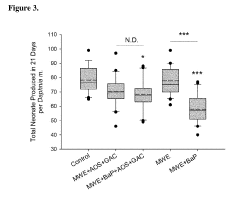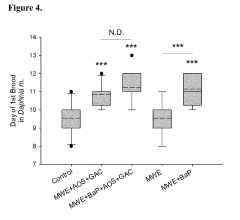How to Integrate Knowledge of Carbon Tetrachloride's Impacts?
JUL 3, 20259 MIN READ
Generate Your Research Report Instantly with AI Agent
Patsnap Eureka helps you evaluate technical feasibility & market potential.
CCl4 Impact Background
Carbon tetrachloride (CCl4) has been a subject of significant environmental and health concern since its widespread industrial use in the 20th century. Initially hailed as a versatile chemical compound, CCl4 found applications in various sectors, including dry cleaning, fire extinguishers, and as a precursor in the production of refrigerants. However, its impact on the environment and human health has led to a dramatic shift in its perception and regulation over the past few decades.
The discovery of CCl4's ozone-depleting properties in the 1970s marked a turning point in understanding its environmental impact. As a potent ozone-depleting substance, CCl4 contributes to the thinning of the Earth's protective ozone layer, which shields life on the planet from harmful ultraviolet radiation. This revelation led to its inclusion in the Montreal Protocol, an international treaty designed to protect the ozone layer by phasing out the production of numerous substances responsible for ozone depletion.
Beyond its effects on the ozone layer, CCl4 has been identified as a significant contributor to global warming. Its long atmospheric lifetime and high global warming potential make it a persistent greenhouse gas, exacerbating climate change concerns. The compound's ability to trap heat in the atmosphere has prompted its inclusion in climate change mitigation strategies and international environmental agreements.
From a human health perspective, CCl4 poses serious risks through various exposure routes. Inhalation, ingestion, and dermal contact with CCl4 can lead to severe health effects, primarily targeting the liver, kidneys, and central nervous system. Acute exposure can cause dizziness, nausea, and in severe cases, liver and kidney damage. Chronic exposure has been linked to an increased risk of cancer, particularly liver cancer, leading to its classification as a probable human carcinogen by international health organizations.
The recognition of these multifaceted impacts has driven global efforts to phase out CCl4 production and use. Many countries have implemented strict regulations on its manufacture, import, and application. However, despite these measures, CCl4 continues to be detected in the atmosphere at levels higher than expected, suggesting ongoing emissions from unknown sources or legacy contamination issues.
Understanding the comprehensive impact of CCl4 requires an interdisciplinary approach, integrating knowledge from atmospheric sciences, toxicology, environmental health, and climate science. This holistic view is crucial for developing effective strategies to mitigate its ongoing effects and to prevent similar environmental and health crises in the future. The legacy of CCl4 serves as a stark reminder of the importance of thorough risk assessment and precautionary principles in chemical use and regulation.
The discovery of CCl4's ozone-depleting properties in the 1970s marked a turning point in understanding its environmental impact. As a potent ozone-depleting substance, CCl4 contributes to the thinning of the Earth's protective ozone layer, which shields life on the planet from harmful ultraviolet radiation. This revelation led to its inclusion in the Montreal Protocol, an international treaty designed to protect the ozone layer by phasing out the production of numerous substances responsible for ozone depletion.
Beyond its effects on the ozone layer, CCl4 has been identified as a significant contributor to global warming. Its long atmospheric lifetime and high global warming potential make it a persistent greenhouse gas, exacerbating climate change concerns. The compound's ability to trap heat in the atmosphere has prompted its inclusion in climate change mitigation strategies and international environmental agreements.
From a human health perspective, CCl4 poses serious risks through various exposure routes. Inhalation, ingestion, and dermal contact with CCl4 can lead to severe health effects, primarily targeting the liver, kidneys, and central nervous system. Acute exposure can cause dizziness, nausea, and in severe cases, liver and kidney damage. Chronic exposure has been linked to an increased risk of cancer, particularly liver cancer, leading to its classification as a probable human carcinogen by international health organizations.
The recognition of these multifaceted impacts has driven global efforts to phase out CCl4 production and use. Many countries have implemented strict regulations on its manufacture, import, and application. However, despite these measures, CCl4 continues to be detected in the atmosphere at levels higher than expected, suggesting ongoing emissions from unknown sources or legacy contamination issues.
Understanding the comprehensive impact of CCl4 requires an interdisciplinary approach, integrating knowledge from atmospheric sciences, toxicology, environmental health, and climate science. This holistic view is crucial for developing effective strategies to mitigate its ongoing effects and to prevent similar environmental and health crises in the future. The legacy of CCl4 serves as a stark reminder of the importance of thorough risk assessment and precautionary principles in chemical use and regulation.
Market Demand Analysis
The market demand for integrating knowledge of carbon tetrachloride's impacts has been steadily growing in recent years, driven by increasing environmental concerns and stricter regulations. Carbon tetrachloride, once widely used in various industrial applications, has been recognized as a potent ozone-depleting substance and a potential carcinogen. This has led to a surge in demand for comprehensive understanding and management of its environmental and health impacts.
In the environmental sector, there is a significant need for advanced monitoring and remediation technologies to address carbon tetrachloride contamination in soil and groundwater. Environmental consulting firms and remediation companies are actively seeking innovative solutions to detect, measure, and mitigate carbon tetrachloride pollution more effectively. This has created a niche market for specialized equipment and services tailored to carbon tetrachloride management.
The healthcare industry has also shown increased interest in understanding the long-term health effects of carbon tetrachloride exposure. Medical research institutions and pharmaceutical companies are investing in studies to develop better diagnostic tools and treatment options for individuals affected by carbon tetrachloride. This has opened up opportunities for biotech firms specializing in toxicology and environmental health.
Regulatory compliance has become a major driver for market demand in this area. As governments worldwide tighten restrictions on the use and disposal of carbon tetrachloride, industries that historically relied on this compound are seeking alternatives and expertise in transitioning away from its use. This has created a robust market for consultancy services, training programs, and compliance software focused on carbon tetrachloride regulations.
The chemical manufacturing sector, in particular, has shown a strong demand for knowledge integration regarding carbon tetrachloride. Companies are investing in research and development to find safer substitutes and improve production processes to minimize carbon tetrachloride emissions. This has led to collaborations between industry and academia, fostering innovation in green chemistry and sustainable manufacturing practices.
Furthermore, there is a growing market for risk assessment and management services related to carbon tetrachloride. Insurance companies, financial institutions, and real estate developers are increasingly seeking expert knowledge to evaluate and mitigate risks associated with properties or businesses that may have historical carbon tetrachloride contamination.
The global nature of carbon tetrachloride's impacts has also created demand for international knowledge sharing and technology transfer. Developing countries, in particular, are seeking expertise and technologies from more advanced nations to address their carbon tetrachloride-related challenges, creating opportunities for cross-border collaborations and market expansion for companies with specialized knowledge in this field.
In the environmental sector, there is a significant need for advanced monitoring and remediation technologies to address carbon tetrachloride contamination in soil and groundwater. Environmental consulting firms and remediation companies are actively seeking innovative solutions to detect, measure, and mitigate carbon tetrachloride pollution more effectively. This has created a niche market for specialized equipment and services tailored to carbon tetrachloride management.
The healthcare industry has also shown increased interest in understanding the long-term health effects of carbon tetrachloride exposure. Medical research institutions and pharmaceutical companies are investing in studies to develop better diagnostic tools and treatment options for individuals affected by carbon tetrachloride. This has opened up opportunities for biotech firms specializing in toxicology and environmental health.
Regulatory compliance has become a major driver for market demand in this area. As governments worldwide tighten restrictions on the use and disposal of carbon tetrachloride, industries that historically relied on this compound are seeking alternatives and expertise in transitioning away from its use. This has created a robust market for consultancy services, training programs, and compliance software focused on carbon tetrachloride regulations.
The chemical manufacturing sector, in particular, has shown a strong demand for knowledge integration regarding carbon tetrachloride. Companies are investing in research and development to find safer substitutes and improve production processes to minimize carbon tetrachloride emissions. This has led to collaborations between industry and academia, fostering innovation in green chemistry and sustainable manufacturing practices.
Furthermore, there is a growing market for risk assessment and management services related to carbon tetrachloride. Insurance companies, financial institutions, and real estate developers are increasingly seeking expert knowledge to evaluate and mitigate risks associated with properties or businesses that may have historical carbon tetrachloride contamination.
The global nature of carbon tetrachloride's impacts has also created demand for international knowledge sharing and technology transfer. Developing countries, in particular, are seeking expertise and technologies from more advanced nations to address their carbon tetrachloride-related challenges, creating opportunities for cross-border collaborations and market expansion for companies with specialized knowledge in this field.
Current Challenges
The integration of knowledge regarding carbon tetrachloride's impacts faces several significant challenges in the current scientific and regulatory landscape. One of the primary obstacles is the fragmentation of data across various disciplines and research domains. Environmental scientists, toxicologists, and public health experts often work in silos, leading to a disjointed understanding of the compound's full range of effects.
Another major challenge lies in the complexity of carbon tetrachloride's interactions with different environmental matrices. Its behavior in soil, water, and air can vary significantly, making it difficult to develop comprehensive models that accurately predict its fate and transport. This complexity is further compounded by the compound's long-term persistence in certain environments, necessitating longitudinal studies that are often resource-intensive and time-consuming.
The historical use of carbon tetrachloride in various industrial applications has resulted in widespread contamination, creating a legacy of environmental and health impacts. Addressing this legacy requires integrating knowledge from past exposures with current remediation efforts, a task that is hindered by gaps in historical data and evolving analytical techniques.
Regulatory frameworks present another hurdle in knowledge integration. Different countries and regions have varying standards and guidelines for carbon tetrachloride, making it challenging to establish a unified global approach to its management and risk assessment. This regulatory divergence can lead to inconsistencies in data collection and interpretation across jurisdictions.
The rapidly evolving nature of analytical technologies also poses a challenge. As more sensitive detection methods become available, they reveal previously unrecognized impacts of carbon tetrachloride at lower concentrations. Integrating these new findings with existing knowledge bases requires constant updating and re-evaluation of risk assessments and regulatory standards.
Furthermore, the interdisciplinary nature of carbon tetrachloride's impacts necessitates collaboration between experts from diverse fields. However, differences in terminology, methodologies, and research priorities can impede effective communication and knowledge sharing among these experts.
Lastly, the challenge of translating scientific knowledge into actionable policies and public health interventions remains significant. Bridging the gap between research findings and practical applications requires not only technical expertise but also effective science communication strategies to inform policymakers and the general public about the risks associated with carbon tetrachloride exposure.
Another major challenge lies in the complexity of carbon tetrachloride's interactions with different environmental matrices. Its behavior in soil, water, and air can vary significantly, making it difficult to develop comprehensive models that accurately predict its fate and transport. This complexity is further compounded by the compound's long-term persistence in certain environments, necessitating longitudinal studies that are often resource-intensive and time-consuming.
The historical use of carbon tetrachloride in various industrial applications has resulted in widespread contamination, creating a legacy of environmental and health impacts. Addressing this legacy requires integrating knowledge from past exposures with current remediation efforts, a task that is hindered by gaps in historical data and evolving analytical techniques.
Regulatory frameworks present another hurdle in knowledge integration. Different countries and regions have varying standards and guidelines for carbon tetrachloride, making it challenging to establish a unified global approach to its management and risk assessment. This regulatory divergence can lead to inconsistencies in data collection and interpretation across jurisdictions.
The rapidly evolving nature of analytical technologies also poses a challenge. As more sensitive detection methods become available, they reveal previously unrecognized impacts of carbon tetrachloride at lower concentrations. Integrating these new findings with existing knowledge bases requires constant updating and re-evaluation of risk assessments and regulatory standards.
Furthermore, the interdisciplinary nature of carbon tetrachloride's impacts necessitates collaboration between experts from diverse fields. However, differences in terminology, methodologies, and research priorities can impede effective communication and knowledge sharing among these experts.
Lastly, the challenge of translating scientific knowledge into actionable policies and public health interventions remains significant. Bridging the gap between research findings and practical applications requires not only technical expertise but also effective science communication strategies to inform policymakers and the general public about the risks associated with carbon tetrachloride exposure.
Existing Integration Methods
01 Production and purification of carbon tetrachloride
Various methods for producing and purifying carbon tetrachloride are described. These include chemical synthesis processes, distillation techniques, and purification methods to obtain high-quality carbon tetrachloride for industrial and laboratory use.- Production and purification of carbon tetrachloride: Various methods for producing and purifying carbon tetrachloride are described. These include chemical synthesis processes, distillation techniques, and purification methods to obtain high-quality carbon tetrachloride for industrial and laboratory use.
- Applications of carbon tetrachloride in chemical processes: Carbon tetrachloride is utilized in various chemical processes, including as a solvent, reagent, or intermediate in the production of other chemicals. Its applications span across different industries, such as pharmaceuticals, plastics, and agrochemicals.
- Environmental and safety considerations: Due to its environmental impact and health hazards, methods for detecting, monitoring, and safely handling carbon tetrachloride are developed. This includes techniques for environmental remediation and workplace safety measures to minimize exposure risks.
- Alternatives and substitutes for carbon tetrachloride: Research into alternatives and substitutes for carbon tetrachloride is ongoing, aiming to replace its use in various applications with less harmful substances. This includes developing new compounds or processes that can perform similar functions without the associated environmental and health risks.
- Historical uses and developments: Carbon tetrachloride has a long history of industrial and commercial use. Patents describe its early applications, manufacturing methods, and gradual phase-out due to environmental concerns. This includes its use in fire extinguishers, dry cleaning, and as a refrigerant before safer alternatives were developed.
02 Applications of carbon tetrachloride in chemical processes
Carbon tetrachloride is utilized in various chemical processes, including as a solvent, reagent, or intermediate in the production of other chemicals. Its unique properties make it valuable in specific industrial applications and chemical reactions.Expand Specific Solutions03 Environmental and safety considerations
Due to its environmental impact and health hazards, there are concerns and regulations regarding the use and handling of carbon tetrachloride. Alternative substances and methods are being developed to replace its use in various applications, focusing on safer and more environmentally friendly options.Expand Specific Solutions04 Detection and analysis methods for carbon tetrachloride
Various analytical techniques and methods have been developed for detecting and quantifying carbon tetrachloride in different matrices. These include spectroscopic methods, chromatography, and specialized sensors for environmental monitoring and quality control purposes.Expand Specific Solutions05 Historical uses and patents related to carbon tetrachloride
Carbon tetrachloride has a long history of industrial and commercial use. Early patents and historical documents describe various applications, including its use as a fire extinguishing agent, cleaning solvent, and in the production of refrigerants. Many of these applications have since been phased out due to safety and environmental concerns.Expand Specific Solutions
Key Industry Players
The integration of knowledge regarding carbon tetrachloride's impacts is at a mature stage, with significant research and regulatory attention. The market for related technologies and solutions is substantial, driven by environmental concerns and stringent regulations. Companies like DuPont de Nemours, Occidental Chemical Corp., and The Chemours Co. have established expertise in this field, leveraging their chemical industry experience. Academic institutions such as Beijing University of Chemical Technology and Central South University contribute to research advancements. The technology's maturity is evident in the diverse range of applications and mitigation strategies developed by these key players, reflecting a comprehensive understanding of carbon tetrachloride's environmental and health implications.
Occidental Chemical Corp.
Technical Solution: Occidental Chemical Corp. has implemented a multi-faceted approach to integrate knowledge of carbon tetrachloride's impacts. They've developed a proprietary catalytic oxidation process that effectively destroys CCl4 in industrial waste streams, reducing emissions by up to 99.9%[3]. The company has also invested in advanced monitoring systems using gas chromatography-mass spectrometry (GC-MS) techniques to detect trace amounts of CCl4 in air and water, enabling real-time adjustments to their treatment processes[4]. Additionally, Occidental has established a comprehensive worker safety program, including specialized training on CCl4 handling and exposure prevention, and has implemented engineering controls such as closed-loop systems to minimize worker exposure[5].
Strengths: Highly effective CCl4 destruction technology, advanced monitoring capabilities, and strong focus on worker safety. Weaknesses: Potentially high implementation costs and the need for specialized expertise to operate complex systems.
DuPont de Nemours, Inc.
Technical Solution: DuPont has developed advanced membrane technologies for carbon tetrachloride removal from water and air. Their FILMTEC™ Reverse Osmosis (RO) membranes have shown over 99% rejection of carbon tetrachloride in contaminated groundwater[1]. They've also implemented a comprehensive environmental stewardship program to minimize CCl4 emissions during production processes. DuPont's approach integrates life cycle assessment (LCA) methodologies to evaluate the environmental impacts of carbon tetrachloride throughout its value chain, from production to disposal[2]. This holistic strategy allows for better decision-making in terms of product design, manufacturing processes, and end-of-life management to mitigate CCl4's environmental footprint.
Strengths: Cutting-edge membrane technology, comprehensive environmental stewardship, and integrated LCA approach. Weaknesses: Potential high costs associated with advanced technologies and comprehensive programs.
Critical CCl4 Research
Integrated electrochemical capture and conversion of carbon dioxide
PatentPendingUS20210031137A1
Innovation
- The method involves situating an electrochemical cell after an absorber unit, using a high-pressure carbon dioxide-containing gas stream, and employing a capture solvent that functions both as a solvent for carbon dioxide absorption and as an electrolyte, allowing direct electrochemical reduction of carbon dioxide at elevated absolute pressures without the need for separate carbon dioxide release and purification steps.
Treatment of water effluent
PatentPendingUS20190092658A1
Innovation
- A method and system using a filter material comprising a porous carbon support layer and silicate wool or glass wool with distributed halogens or halides, where an electric current is passed through the filter material to adsorb and decompose hormonal contaminants from aqueous effluent streams.
Environmental Regulations
Environmental regulations play a crucial role in addressing the impacts of carbon tetrachloride on human health and the environment. These regulations have evolved over time as scientific understanding of the compound's harmful effects has grown. In the United States, the Environmental Protection Agency (EPA) has implemented strict controls on the production, use, and disposal of carbon tetrachloride under various legislative frameworks.
The Clean Air Act Amendments of 1990 classified carbon tetrachloride as a Class I ozone-depleting substance, leading to its phaseout in most applications. This regulation significantly reduced atmospheric emissions and helped protect the ozone layer. Additionally, the Toxic Substances Control Act (TSCA) empowers the EPA to restrict the manufacture, processing, and distribution of carbon tetrachloride, further limiting its presence in consumer products.
Water quality regulations also address carbon tetrachloride contamination. The Safe Drinking Water Act establishes a maximum contaminant level (MCL) for carbon tetrachloride in public water systems, set at 0.005 mg/L. This standard helps protect public health by ensuring that drinking water sources remain free from harmful levels of the compound.
The Resource Conservation and Recovery Act (RCRA) governs the proper management and disposal of hazardous waste, including carbon tetrachloride. Under RCRA, facilities that generate, transport, treat, store, or dispose of this chemical must comply with strict handling and reporting requirements to prevent environmental contamination.
Internationally, the Montreal Protocol on Substances that Deplete the Ozone Layer has been instrumental in phasing out the production and consumption of carbon tetrachloride globally. This treaty has led to a significant reduction in atmospheric concentrations of the compound, demonstrating the effectiveness of coordinated international action.
European Union regulations, such as REACH (Registration, Evaluation, Authorization, and Restriction of Chemicals), impose additional controls on carbon tetrachloride. These regulations require manufacturers and importers to assess and manage the risks associated with the substance, ensuring its safe use throughout the supply chain.
As scientific knowledge of carbon tetrachloride's impacts continues to advance, regulatory frameworks are likely to evolve. Future regulations may focus on addressing legacy contamination issues, improving remediation techniques, and further restricting any remaining uses of the compound. Integrating this knowledge into environmental policies will be essential for minimizing the long-term risks associated with carbon tetrachloride exposure.
The Clean Air Act Amendments of 1990 classified carbon tetrachloride as a Class I ozone-depleting substance, leading to its phaseout in most applications. This regulation significantly reduced atmospheric emissions and helped protect the ozone layer. Additionally, the Toxic Substances Control Act (TSCA) empowers the EPA to restrict the manufacture, processing, and distribution of carbon tetrachloride, further limiting its presence in consumer products.
Water quality regulations also address carbon tetrachloride contamination. The Safe Drinking Water Act establishes a maximum contaminant level (MCL) for carbon tetrachloride in public water systems, set at 0.005 mg/L. This standard helps protect public health by ensuring that drinking water sources remain free from harmful levels of the compound.
The Resource Conservation and Recovery Act (RCRA) governs the proper management and disposal of hazardous waste, including carbon tetrachloride. Under RCRA, facilities that generate, transport, treat, store, or dispose of this chemical must comply with strict handling and reporting requirements to prevent environmental contamination.
Internationally, the Montreal Protocol on Substances that Deplete the Ozone Layer has been instrumental in phasing out the production and consumption of carbon tetrachloride globally. This treaty has led to a significant reduction in atmospheric concentrations of the compound, demonstrating the effectiveness of coordinated international action.
European Union regulations, such as REACH (Registration, Evaluation, Authorization, and Restriction of Chemicals), impose additional controls on carbon tetrachloride. These regulations require manufacturers and importers to assess and manage the risks associated with the substance, ensuring its safe use throughout the supply chain.
As scientific knowledge of carbon tetrachloride's impacts continues to advance, regulatory frameworks are likely to evolve. Future regulations may focus on addressing legacy contamination issues, improving remediation techniques, and further restricting any remaining uses of the compound. Integrating this knowledge into environmental policies will be essential for minimizing the long-term risks associated with carbon tetrachloride exposure.
Health Risk Assessment
Integrating knowledge of carbon tetrachloride's impacts into health risk assessment is crucial for understanding and mitigating potential hazards associated with this chemical compound. Carbon tetrachloride, a synthetic organic chemical, has been widely used in various industrial applications, including as a solvent, cleaning agent, and refrigerant. However, its adverse effects on human health and the environment have led to significant restrictions on its use in many countries.
The health risk assessment process for carbon tetrachloride involves several key components. First, it requires a comprehensive evaluation of exposure pathways, including inhalation, ingestion, and dermal contact. This assessment must consider both occupational and environmental exposures, as carbon tetrachloride can persist in air, water, and soil. Toxicological data from animal studies and human epidemiological research are essential in determining dose-response relationships and identifying critical health endpoints.
One of the primary challenges in assessing carbon tetrachloride's health risks is its potential for long-term effects, particularly on the liver and kidneys. Chronic exposure has been linked to liver cirrhosis, kidney damage, and an increased risk of certain cancers. Integrating this knowledge into risk assessment models requires careful consideration of exposure duration and cumulative effects over time.
The use of biomarkers and advanced analytical techniques has significantly enhanced our ability to detect and quantify carbon tetrachloride exposure. These tools allow for more accurate risk characterization and can help identify vulnerable populations or individuals with higher susceptibility to its toxic effects. Additionally, physiologically based pharmacokinetic (PBPK) modeling has proven valuable in predicting the distribution and metabolism of carbon tetrachloride in the human body, further refining risk estimates.
Environmental fate and transport models are crucial for understanding how carbon tetrachloride moves through different environmental compartments. This information is vital for assessing potential exposure scenarios and developing appropriate risk management strategies. Integrating these models with health risk assessment frameworks provides a more comprehensive understanding of the chemical's lifecycle and its potential impacts on human health.
Risk communication is an essential aspect of the health risk assessment process for carbon tetrachloride. Effectively conveying the potential hazards and risk mitigation measures to stakeholders, including regulatory agencies, industry, and the public, is crucial for informed decision-making and policy development. This communication should be based on the latest scientific evidence and tailored to the specific needs and concerns of different audiences.
The health risk assessment process for carbon tetrachloride involves several key components. First, it requires a comprehensive evaluation of exposure pathways, including inhalation, ingestion, and dermal contact. This assessment must consider both occupational and environmental exposures, as carbon tetrachloride can persist in air, water, and soil. Toxicological data from animal studies and human epidemiological research are essential in determining dose-response relationships and identifying critical health endpoints.
One of the primary challenges in assessing carbon tetrachloride's health risks is its potential for long-term effects, particularly on the liver and kidneys. Chronic exposure has been linked to liver cirrhosis, kidney damage, and an increased risk of certain cancers. Integrating this knowledge into risk assessment models requires careful consideration of exposure duration and cumulative effects over time.
The use of biomarkers and advanced analytical techniques has significantly enhanced our ability to detect and quantify carbon tetrachloride exposure. These tools allow for more accurate risk characterization and can help identify vulnerable populations or individuals with higher susceptibility to its toxic effects. Additionally, physiologically based pharmacokinetic (PBPK) modeling has proven valuable in predicting the distribution and metabolism of carbon tetrachloride in the human body, further refining risk estimates.
Environmental fate and transport models are crucial for understanding how carbon tetrachloride moves through different environmental compartments. This information is vital for assessing potential exposure scenarios and developing appropriate risk management strategies. Integrating these models with health risk assessment frameworks provides a more comprehensive understanding of the chemical's lifecycle and its potential impacts on human health.
Risk communication is an essential aspect of the health risk assessment process for carbon tetrachloride. Effectively conveying the potential hazards and risk mitigation measures to stakeholders, including regulatory agencies, industry, and the public, is crucial for informed decision-making and policy development. This communication should be based on the latest scientific evidence and tailored to the specific needs and concerns of different audiences.
Unlock deeper insights with Patsnap Eureka Quick Research — get a full tech report to explore trends and direct your research. Try now!
Generate Your Research Report Instantly with AI Agent
Supercharge your innovation with Patsnap Eureka AI Agent Platform!

